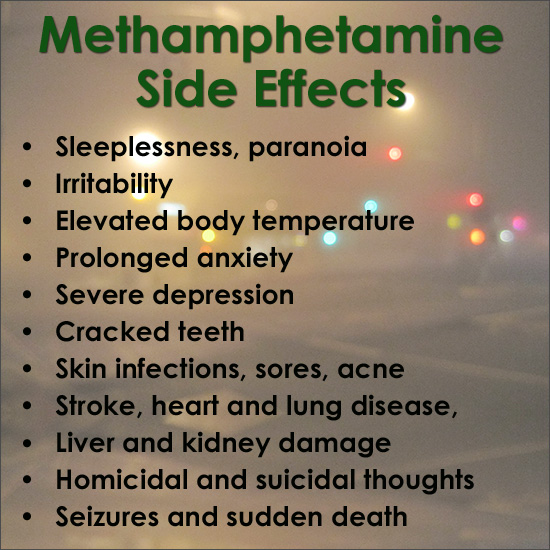Everyone of a certain age has heard about Methamphetamines. This incredibly addictive central nervous stimulant has even been the subject of the hit television show “Breaking Bad,” which aired for 6 seasons, from 2008 to 2013. Often going by names like “crystal meth,” “ice,” and “glass,” methamphetamines wreak havoc on the lives of users and those who care about their safety and well-being.

However, recreational use of the drug is widespread and bridges socio-economic classes. Heir to the Getty oil fortune, Andrew Getty was found dead in his Hollywood Hills home earlier this year with toxic levels of methamphetamine in his system. Unlike the television and news stereotype, “meth” is not just a cheap “high” for the poor and uneducated.
Methamphetamine comes in a powder form that is sometimes processed into “rock.” It can be snorted, injected, smoked or taken orally. Regardless of the delivery system, “meth” produces an intense euphoric high from the release of dopamine and serotonin in the brain. Even after the rush wears off, users can still have increased energy levels and a sense of well-being that lasts up to 12 hours.
Aside from the high, methamphetamines are so addictive because the “crash” or withdrawal from the drug is so awful. Users build up a tolerance and have to take more and more to achieve the original effect of the drug. In both the short and long term, methamphetamines can cause terrible damage to individuals, both psychologically and physically.
What are the Side Effects of Methamphetamine Addiction?
- Sleeplessness, paranoia
- Irritability
- Elevated body temperature
- Prolonged anxiety and severe depression
- Cracked teeth
- Skin infections, sores, acne
- Strokes, heart infections, lung disease, liver and kidney damage
- Homicidal and suicidal thoughts
- Seizures and sudden death
“Tweaking” is a term associated with “meth” users that haven’t slept in 3 to 15 days. Continued and prolonged use of the drug has rendered the “tweaker” unable to achieve a suitable high. They are generally irritable and paranoid, behavior that lends itself to self-harm, domestic violence, car accidents and spur-of-the-moment crime.
Data from the National Institute on Drug Abuse (NIH) states that as of 2012, 1.2 million people reported using “meth” within the past year, and nearly a half-million of those within the past month. Law enforcement and healthcare analysts point out that these numbers are only people needing medical assistance or who have been arrested because of methamphetamine possession. These are not generally people seeking treatment, which can be difficult in and of itself.
Richard Rawson, Director of the Matrix Institute, a non-profit addiction research organization, told NBC News, “When you think of the treatment of drugs like methamphetamine, you have to think of it like fixing a broken leg – treatment provides a structure to allow their brain chemistry to return to normal. Their brain is out of tune…and it takes a while to recover.
According to the NIH, the most effective treatment for methamphetamine addiction found so far have been behavioral therapies, such as cognitive behavioral therapy (CBT). With CBT, patients develop skills to notice how their thinking affects their behavior. Over time, this leads to adaptive thinking and making better choices.
Related:
What Drug Abuse Does to Your Teeth?





